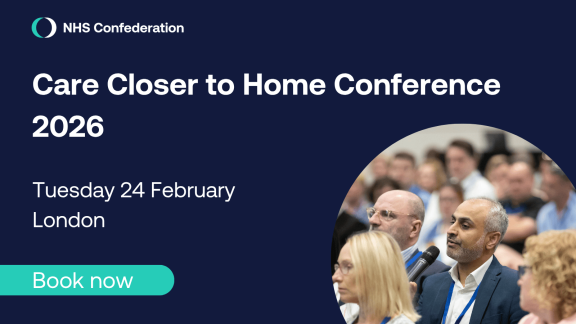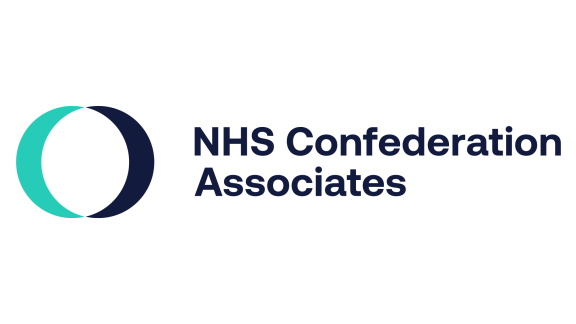Patient and public involvement can power the 10 Year Health Plan

To design a health service that truly meets the needs of all, meaningful involvement and co-production with patients and the public are essential.
For the last ten years, I’ve been committed to working with patients and the public to ensure health service design and innovation truly meets the needs of the user. So I firmly believe that to deliver on the ambitions of the 10 Year Health Plan, actively listening to and working with communities is not a nice to have, it’s an essential.
As many working in or with the NHS, I was eager to understand the proposals in the 10 Year Health Plan, and what they would mean for patient and public involvement and engagement (PPIE). My verdict: the future landscape for PPIE is uncertain, but I’m cautiously optimistic.
There are some initial promising signs. The emphasis given to ‘patient voice’ throughout shows the recognition of the importance of liv(ed/ing) experience in healthcare design and delivery. Equally, the shift to neighbourhood health services acknowledges the diversity of communities and specificity of the challenges that different populations face. There’s even commitment to create a new function within the Department of Health and Social Care (DHSC) focusing on patient experience, which in my mind will be pivotal in achieving these ambitions.
But it’s not all good news. The abolition of Healthwatch - a completely independent route for communities to share their views and experiences of healthcare - feels out of step. Though a commitment has been made to hear the patient voice, there’s little actual detail on how this will be done.
Working in partnership with communities
For me, working with communities, taking a holistic view of patient needs, and co-creating solutions are the essential ingredients to deliver the ambitions of the 10 Year Health Plan and ensuring health service design and innovation truly meets the needs of the user.
Hyper-local healthcare will only be successful if we work in partnership with communities to understand their experiences and shape the future of services in line with their health needs and ambitions.
I witnessed this first-hand working with the Wood Green Community Diagnostic Centre. While the community felt positive about having health access on the high street, there were still barriers to access including the initial referral and appointment systems. This was further compounded by concerns around cultural competency and language barriers. From this work, the centre brought in improvements to the booking system to make it easier and more flexible.
Taking a holistic view
The move to a proactive healthcare system is another shift that will need to be rooted in collaboration. Preventing illness – rather than just treating it – will require an NHS system that looks holistically at people (who they are and how they live) to match them with the services and solutions that will best support risk reduction.
By working with communities, we can make sure the services and solutions on offer are acceptable and accessible for those they are aiming to support.
For example, during early implementation of the cardiovascular disease risk tool CVDACTION in primary care, identifying those at risk was just one part of the puzzle. Another key piece was better understanding the ‘bigger picture’ and working with patients to answer the question ‘what’s needed to overcome the challenges you face?’. Through the patient listening activities, we realised that the tool needed to have tangible, accessible information and services that would support individuals to make changes.
Co-designing digital interventions with patients and the public
The final big-hitter of the 10 Year Health Plan is the move to shifting to digital solutions with more widespread use of AI-tools. Recent data from The Health Foundation shows that one-in-six members of the public think that AI will make care quality worse indicating a need to engage and involve communities in the roll-out to build support for the AI ambition.
In north-east London, I’ve been involved in a pilot of AI-screening technology and targeted, phone-based clinical coaching that identifies and supports patients at high risk of needing unplanned emergency care. Throughout the project, we’ve involved local residents in developing the information materials, including the information about data and algorithm use, to provide transparency and build trust in the work.
We’re also continuing the involvement of communities, so that if we see inequities in people being identified and accessing the service, we can proactively find out why and together work on designing solutions.
Turning cautious optimism into positive action
To deliver the 10 Year Health Plan, we must embed meaningful PPIE at every stage. We need to ensure we listen to communities, work with them to identify the best solutions, and co-produce services and solutions as much as possible. This will ensure that the shifts that the government want to put in will reflect real needs, tackle inequalities and build trust with communities.
Listening and working with the people who the change is for isn’t just a nice to have - it’s essential to creating lasting, inclusive impact in health and care.
By Dr Natt Day is head of patient and public involvement and engagement at UCLPartners. You can connect with Natt on LinkedIn



